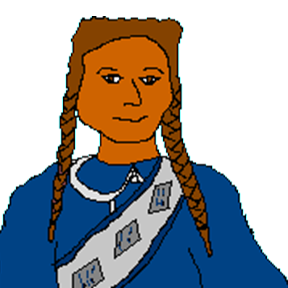Famous Native Americans


Joseph was a member of the Nez Perce Indians. The Nez Perce lived between the Blue Mountains and the Snake River in the Wallowa Valley. The Nez Perce hunted deer, elk, mountain goats, and grizzly bears. They also ate salmon. At first Chief Tu-eka-kas welcomed the traders and trappers. But more and more settlers were coming and staying.
In 1855 the soldiers called a meeting at Walla Walla. They wanted to trade the Indians’ land for blankets and money. Chief Tu-eka-kas told the soldiers that his land was not for sale. For the next 16 years the Indians and the white men lived in peace. When the old Chief Tu-eka-kas died in 1871 the Indians made Joseph their chief.
All but Joseph and four other chiefs signed a treaty to leave their land and live on the Lapwai Reservation in Idaho. In the spring of 1877 General Howard told Chief Joseph that he would wait 30 days for the Indians to move to the reservation. If they would not move the soldiers would come and force them to go. Chief Joseph told the Indians they could not win a fight against the white men. They must go to the reservation.


During the next 30 days the Indians gathered up all their herds of cattle and horses. They headed with them to the reservation. While crossing the river many of the cattle turned and ran back to safety. While Chief Joseph was back gathering the cattle, three of his warriors left the camp and started fires in the settlers homes. Eighteen people were killed.
Joseph had no choice now but to lead the Indians into a war against the Bluecoats. When the Bluecoats retreated Joseph's brother Ollokot was behind them helping the Indians to win the first battle.
Chief Joseph knew the Indians could not win additional fights against the soldiers. He decided to take the Indians into Canada to safety. Joseph took 700 Indians through the Bitter Root Mountains. The Indians knew how to find roots and berries for food. This helped them move quickly. The soldiers had to carry food in big wagons slowing them down. The Indians just about got away.
While the Indians rested at Big Hole River the Bluecoats sent messages on the telegraph wires for new troops. The new troops were not tired from the chase and they were able to catch up to the Indians. The Bluecoats gave a surprise attack at Big Hole River. The Indians were able to drive back the soldiers, although many Indians died in the battle. Chief Joseph's wife and Ollokot's wife both were killed.
When Joseph started north again he learned the soldiers were blocking his way. He took 40 of his best braves and had them travel in a straight line like the soldiers do. At night the soldiers thought the Indians were soldiers and didn't stop them. The Indians then stampeded the soldier's horses.
The Indians started running again. They had a long, hard trip through Yellowstone Park. Many grew sick. At the foot of Bear Paw Mountains, just one day's walk to Canada, the Indians begged to make camp and rest. At dawn the Bluecoats surrounded the Indians and began attacking. Joseph told his people to take cover on the hillside when the soldiers started to attack. Many Indians died that day including Ollokot.
Chief Joseph had a plan. He sent a few of his warriors into Canada to reach Chief Sitting Bull of the Sioux. Chief Joseph wanted Sitting Bull to send braves to help with the fight.
Fighting continued the next day. Many Indians were killed. When help did not come Joseph raised the white flag. At sunset Chief Joseph handed over his gun to General Howard and said he could stand no more fighting.
The Indians were moved from place to place over the next few years. They lived in Dakota then in Kansas and Oklahoma. Chief Joseph kept his word and never fought again. He became a spokesman for his people.
